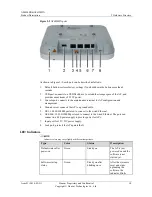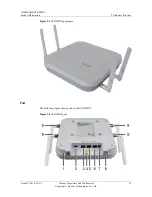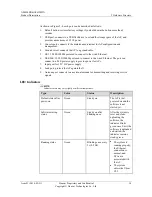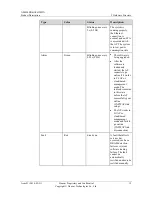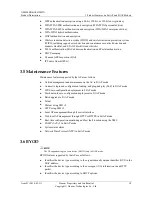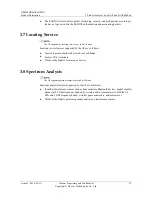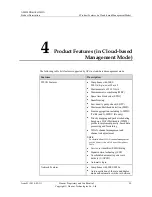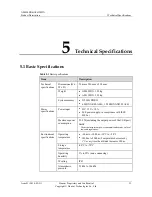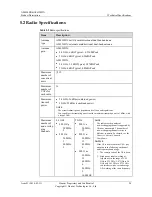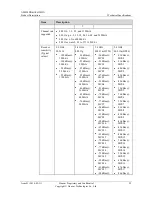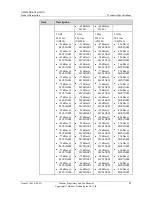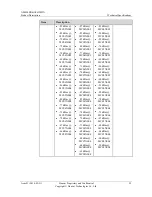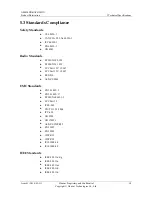
AP6050DN&AP6150DN
Product Description
5 Technical Specifications
Issue 01 (2016-05-31)
Huawei Proprietary and Confidential
Copyright © Huawei Technologies Co., Ltd.
24
5.2 Radio Specifications
Table 5-2
Radio specifications
Item
Description
Antenna
type
AP6050DN: built-in omnidirectional dual-band antenna
AP6150DN: external omnidirectional dual-band antenna
Antenna
gain
AP6050DN:
2.4 GHz: 6 dBi/Typical
,
6.53dBi/Peak
5 GHz: 6 dBi/Typical, 6.58dBi/Peak
AP6150DN:
2.4 GHz: 3.5 dBi/Typical, 3.87dBi/Peak
5 GHz: 4 dBi/Typical, 4.82dBi/Peak
Maximum
number of
concurrent
users
≤512
Maximum
number of
VAPs for
each radio
16
Maximum
transmit
power
2.4 GHz: 26 dBm (combined power)
5 GHz: 25 dBm (combined power)
NOTE
The actual transmit power depends on local laws and regulations.
You can adjust the transmit power from the maximum transmit power to 1 dBm, with
a step of 1 dB.
Maximum
number of
non-overlap
ping
channels
2.4 GHz
802.11b/g
−
20 MHz:
3
802.11n
−
20 MHz:
3
−
40 MHz:
1
5 GHz
802.11a
−
20 MHz:
13
802.11n
−
20 MHz:
13
−
40 MHz:
6
802.11ac
−
20 MHz:
13
−
40 MHz:
6
−
80 MHz:
3
−
160 MHz:
NOTE
The table uses the number of
non-overlapping channels supported by
China as an example. The number of
non-overlapping channels varies in
different countries. For details, see the
Country Codes & Channels
Compliance
.
NOTICE
If the AP is delivered to the USA, pay
attention to the following on channel
and frequency band usage.
1.
The country code of the AP is fixed.
2.
High power radars working at
frequencies in the range of 5.25
GHz to 5.35 GHz, 5.47 GHz to 5.6
GHz, and 5.65 GHz to 5.725 GHz
can interfere with or even damage
APs working at the same frequency.

